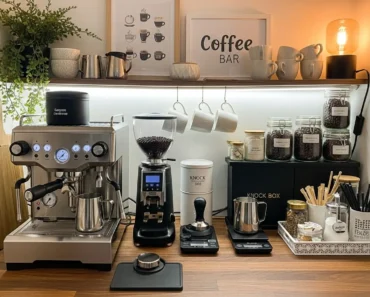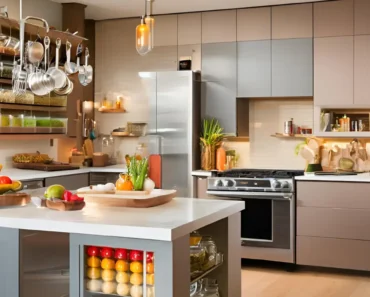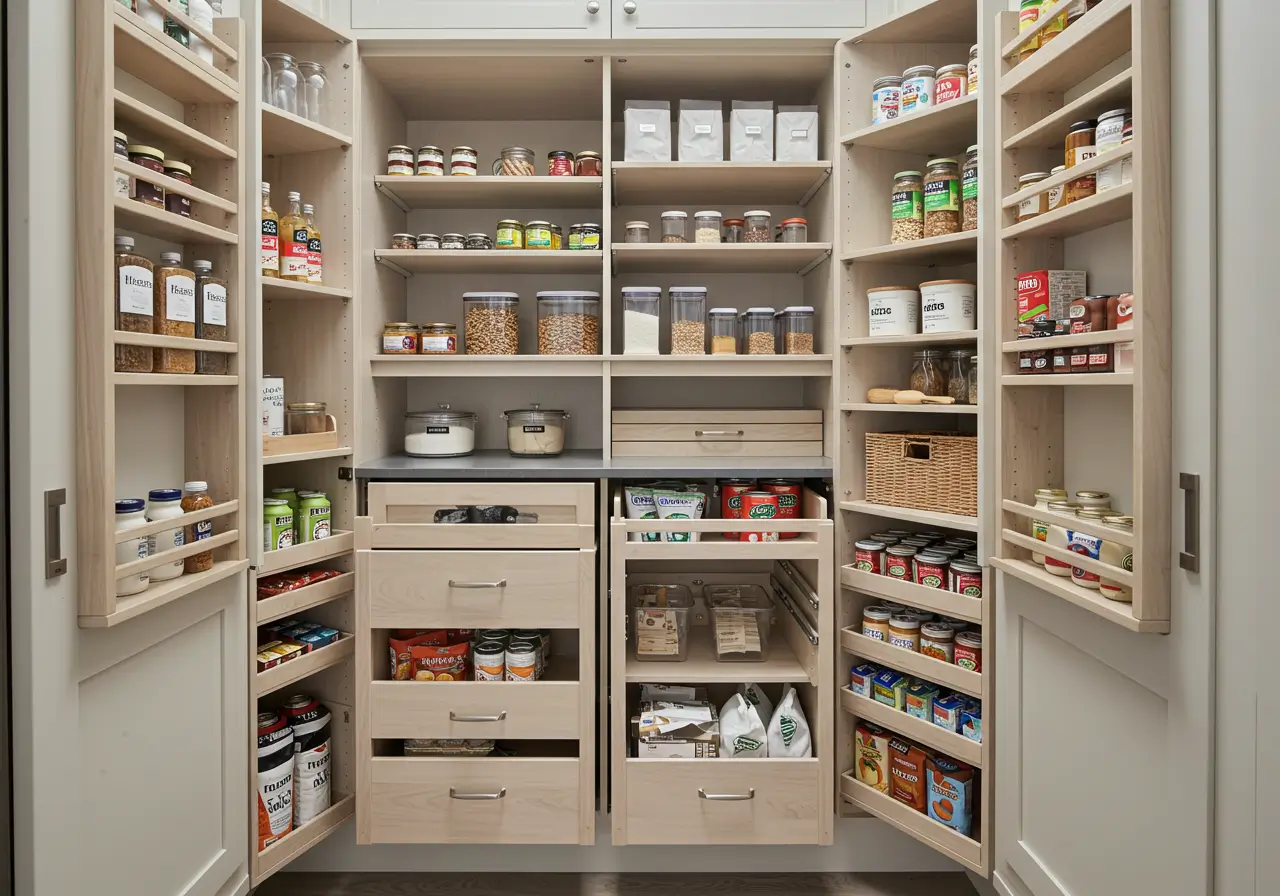Step into any contemporary home today, and you’ll likely spot the clean lines and organic curves that define mid-century modern design. This aesthetic movement from the 1940s to 1960s continues to captivate homeowners and interior designers worldwide.
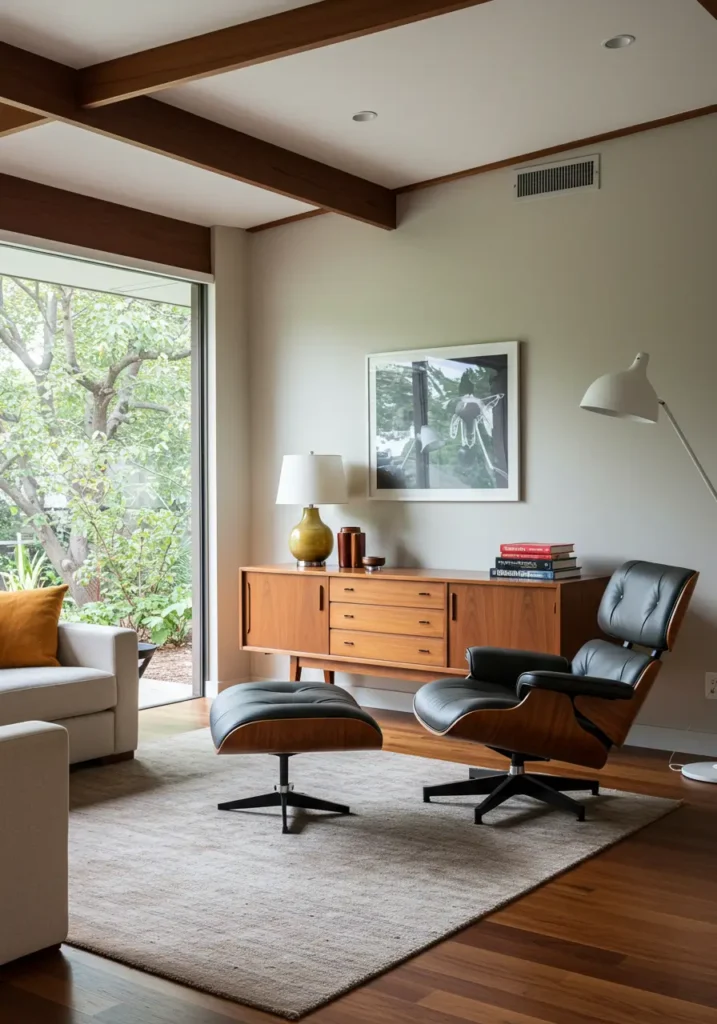
The mid-century modern movement emerged during a time of post-war optimism and innovation. Designers sought to create furniture that embodied functionality without sacrificing beauty. Today, as we witness a resurgence of this style across homes and commercial spaces, one question persists: is mid-century modern furniture truly timeless?
The answer lies in the fundamental principles that drove this design revolution. Mid-century modern furniture transcends fleeting trends because it addresses universal human needs: comfort, functionality, and aesthetic appeal. These pieces work harmoniously with contemporary lifestyles while maintaining their distinctive character.
From iconic Eames lounge chairs to sleek walnut credenzas, mid-century modern pieces continue to command respect in today’s design landscape. The style’s emphasis on natural materials, geometric forms, and purposeful design creates a foundation that remains relevant regardless of changing decorative preferences.
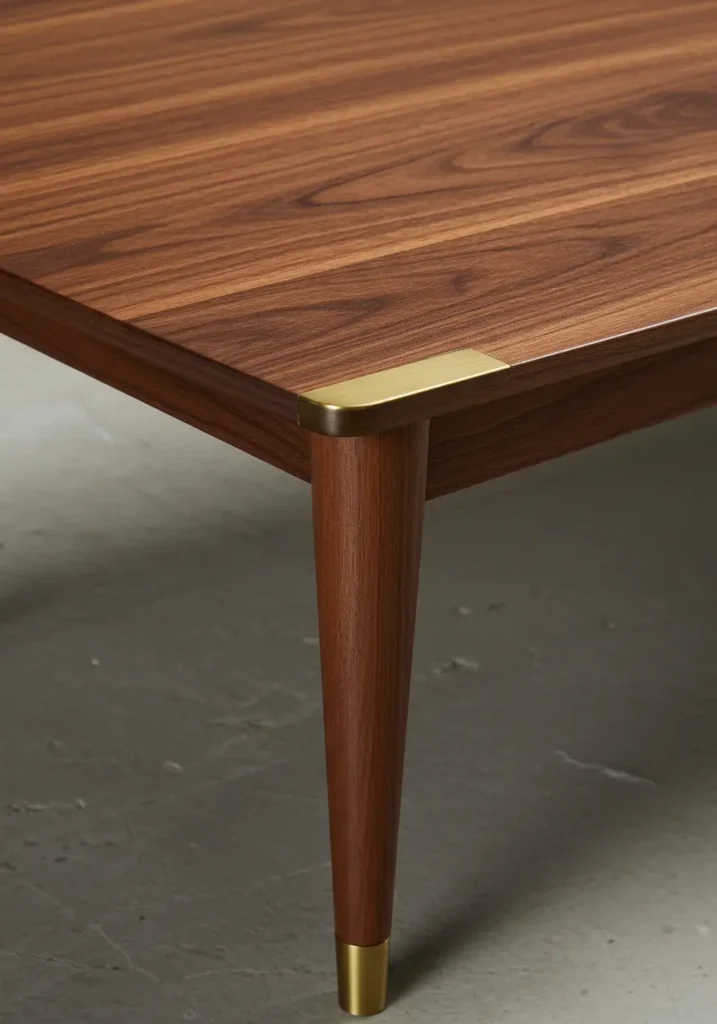
The Enduring Foundation of Mid-Century Design
Clean Lines and Simplicity
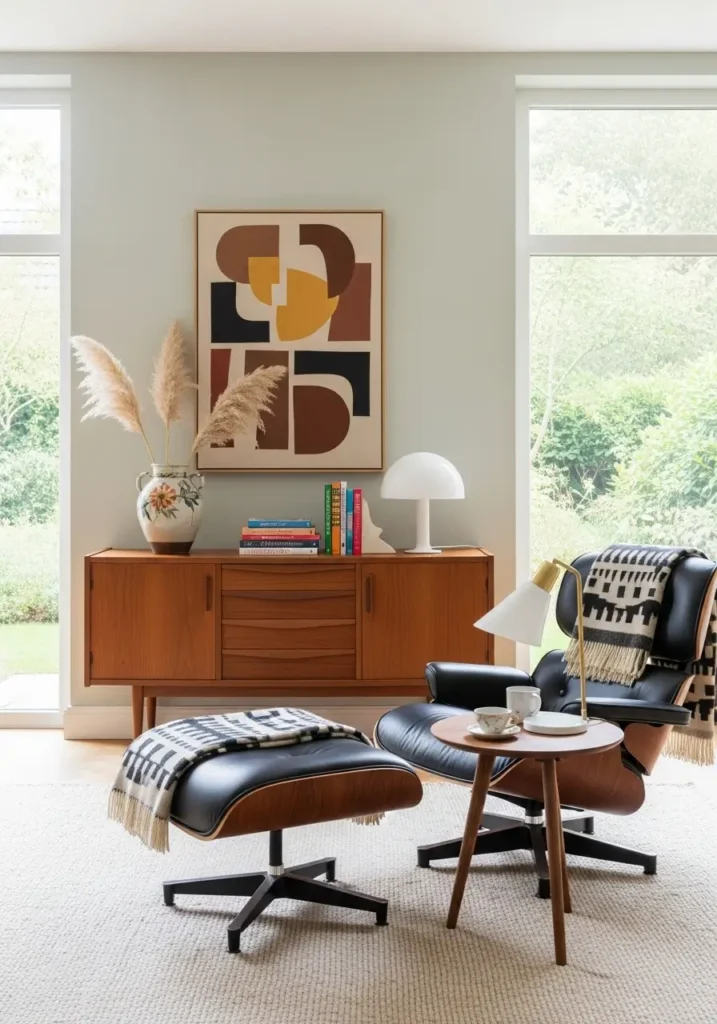
Mid-century modern furniture embraces minimalism without sterility. The clean, unadorned lines create visual calm in our increasingly complex world. This simplicity allows pieces to integrate seamlessly with various decorating styles, from Scandinavian hygge to contemporary maximalism.
Form Follows Function
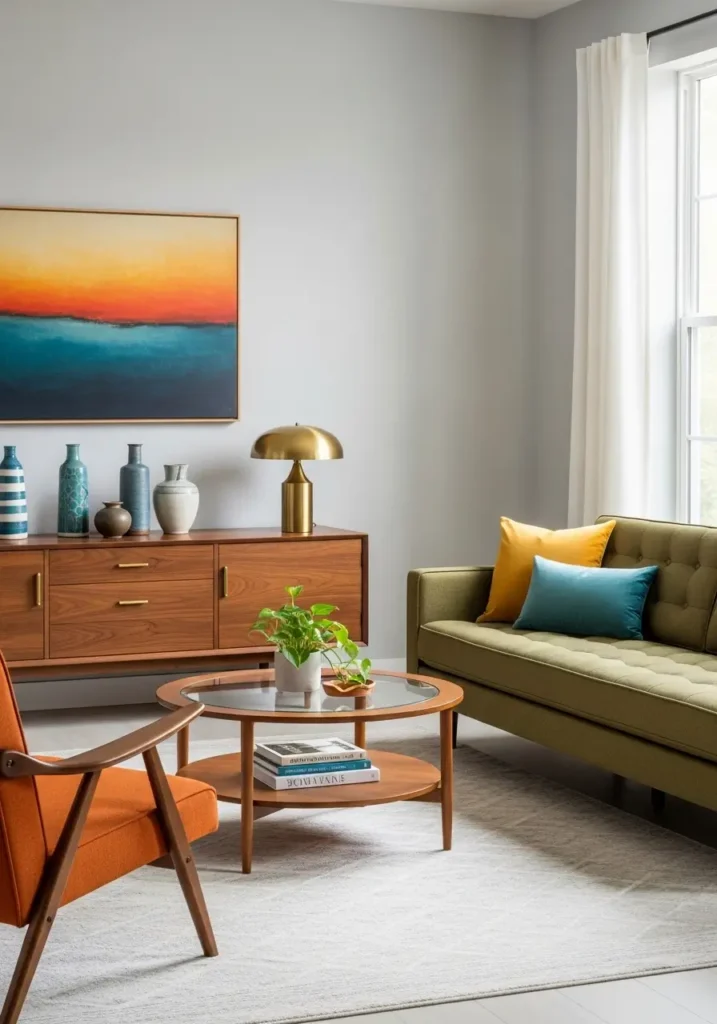
Every element serves a purpose in mid-century design. Storage solutions appear elegant rather than utilitarian. Seating provides comfort without bulk. This practical approach ensures that pieces remain useful and relevant as living needs evolve.
The genius of mid-century modern design lies in its restraint. Designers like Charles and Ray Eames, George Nelson, and Arne Jacobsen understood that lasting appeal comes from perfecting essential elements rather than adding decorative flourishes. This philosophy creates furniture that feels fresh decades after its creation.
Natural materials form another cornerstone of the movement’s timeless appeal. Teak, walnut, and rosewood age beautifully, developing rich patinas that enhance their character. The organic warmth of wood balances the geometric precision of the forms, creating pieces that feel both sophisticated and welcoming.
Iconic Pieces That Define Timeless Appeal
These pieces transcend their era because they solve fundamental design problems with elegance and innovation. The Eames Lounge Chair provides exceptional comfort while maintaining visual lightness. The Noguchi Coffee Table transforms a utilitarian object into sculptural art without sacrificing functionality.
What makes these designs timeless is their ability to enhance rather than dominate a space. They provide focal points without overwhelming other elements, allowing homeowners to build layered, personal environments around these anchor pieces.
![]()
Mid-Century Modern in Today’s Homes
The 2025 Revival
Current design trends demonstrate mid-century modern’s continued relevance. Contemporary interpretations feature updated materials and colors while preserving the movement’s essential characteristics. Designers incorporate sustainable materials and advanced manufacturing techniques to create pieces that honor the original aesthetic while meeting modern expectations.
The rise of remote work has particularly highlighted mid-century modern’s practical benefits. Home offices furnished with clean-lined desks and ergonomic seating create productive environments without overwhelming residential spaces. The style’s emphasis on natural light and open layouts aligns perfectly with contemporary living preferences.
Material Innovation
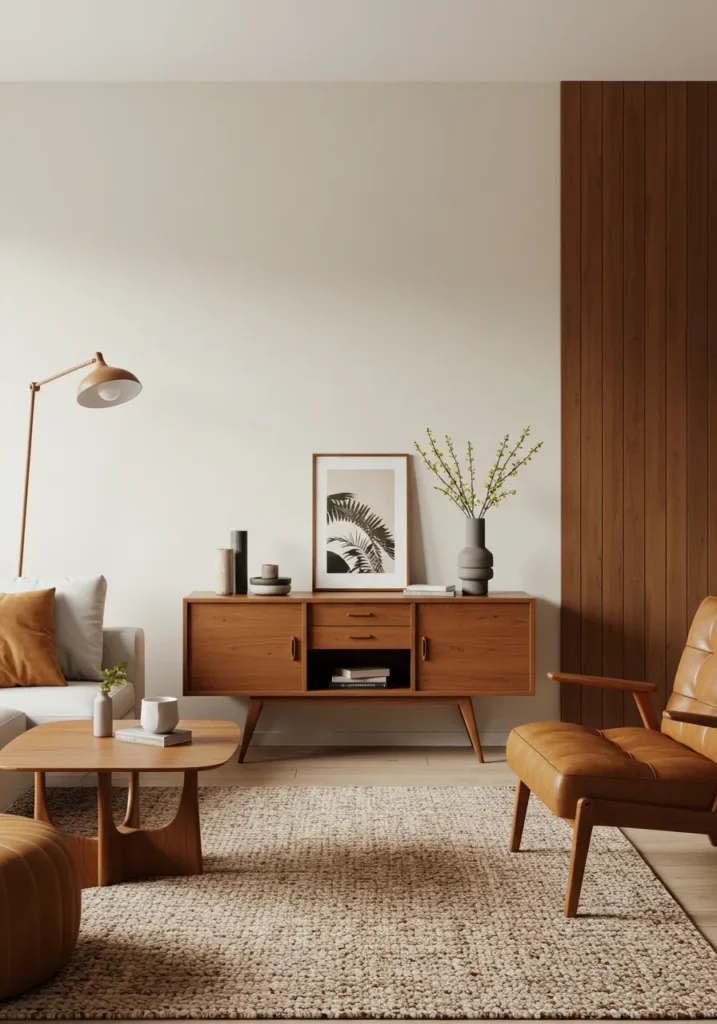
Modern mid-century pieces incorporate sustainable woods, recycled metals, and eco-friendly finishes. These updates maintain the aesthetic while addressing contemporary environmental concerns.
Color Evolution
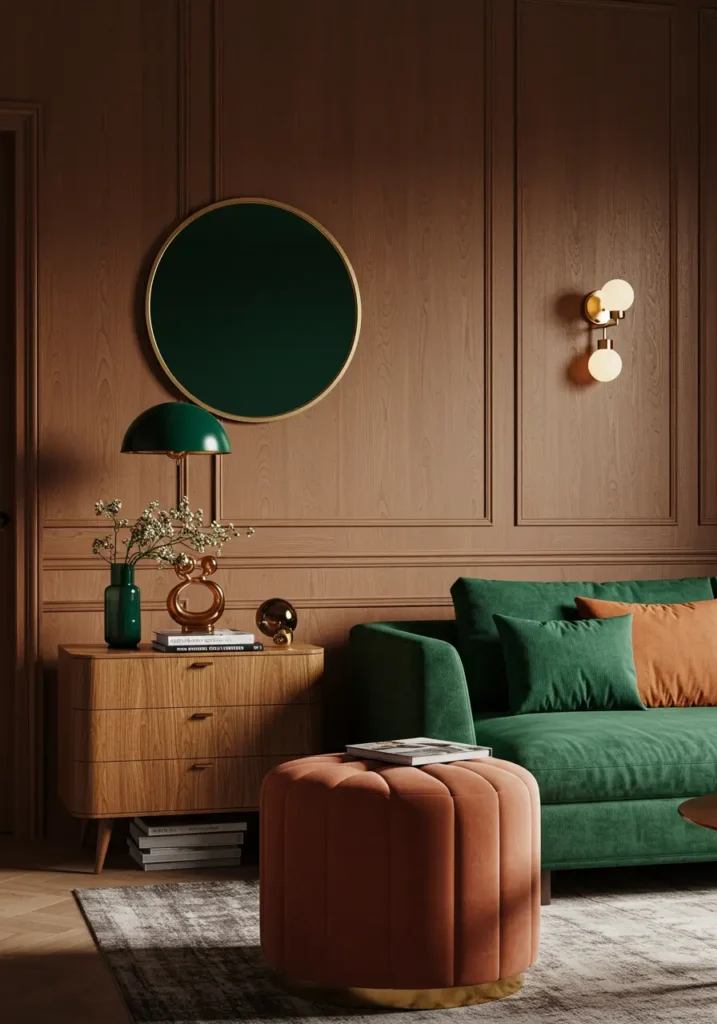
While maintaining the palette of warm woods and neutral tones, contemporary versions embrace bold accent colors and textured fabrics that reflect current preferences.
Technology Integration
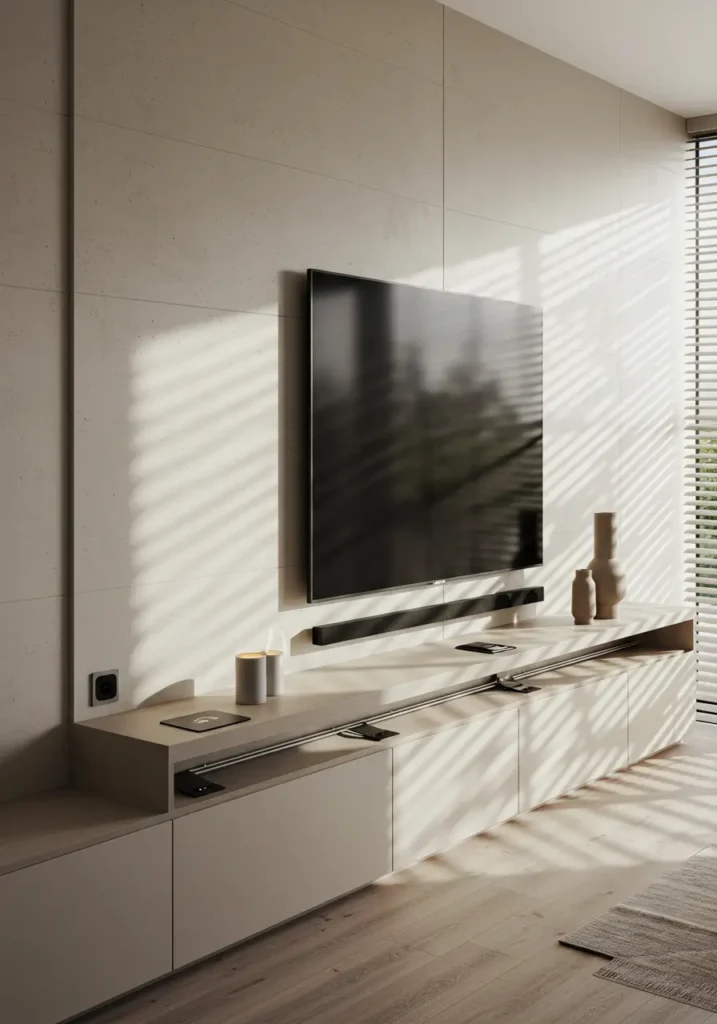
Modern interpretations seamlessly incorporate cable management, wireless charging surfaces, and smart home features without compromising the clean aesthetic.
Universal Design Principles That Endure
The Psychology of Timeless Design
Mid-century modern furniture appeals to fundamental human preferences for order, proportion, and natural materials. Research in environmental psychology supports the calming effects of clean lines and organic forms. These pieces create environments that reduce visual stress while promoting focus and relaxation.
The movement’s emphasis on bringing the outdoors inside resonates strongly with contemporary wellness trends. Large windows, natural materials, and organic shapes create connections to nature that enhance mental well-being. This biophilic approach ensures continued relevance as awareness of environmental psychology grows.
Key Elements That Never Date
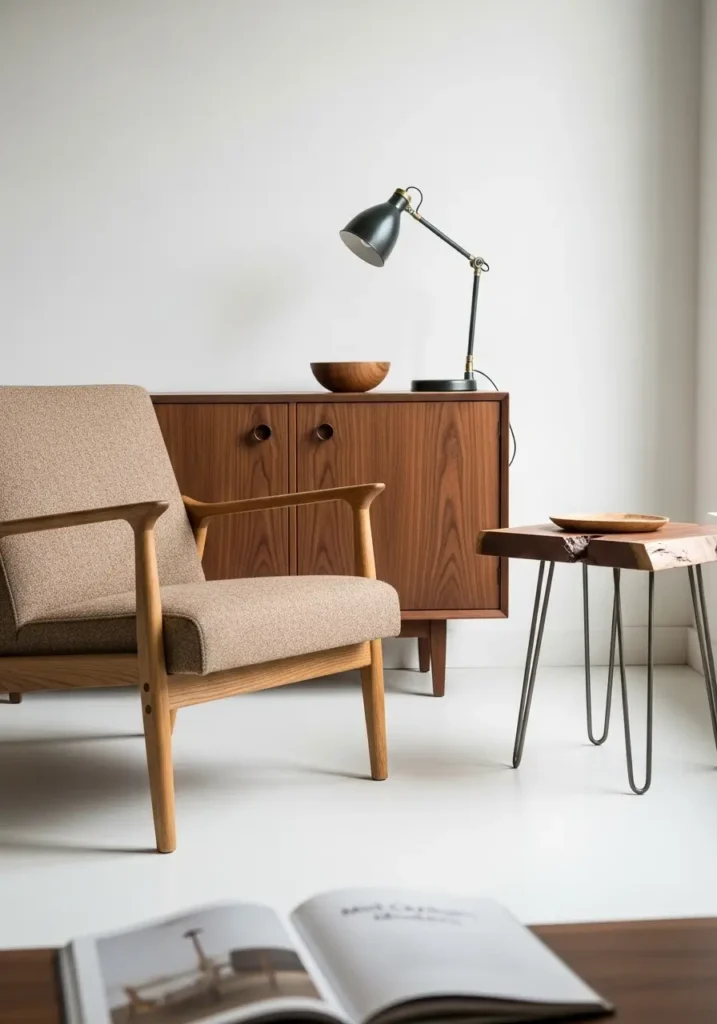
Geometric Harmony
Mathematical proportions create visual satisfaction that transcends cultural and temporal boundaries.
Material Honesty
Celebrating natural properties of wood, metal, and fabric creates authentic beauty that improves with age.
Purposeful Simplicity
Every element serves both functional and aesthetic purposes, eliminating unnecessary decoration.
Related Post: Ultimate Guide to Kitchen Organization for Small Spaces
The Investment Case for Mid-Century Modern
Beyond aesthetic appeal, mid-century modern furniture represents sound financial investment. Authentic vintage pieces from renowned designers consistently appreciate in value. The combination of limited production runs, increasing demand, and the passage of time creates favorable market conditions for collectors and enthusiasts.
Contemporary reproductions and inspired designs offer more accessible entry points while maintaining the style’s essential characteristics. High-quality reproductions from established manufacturers provide the aesthetic benefits of mid-century design at more approachable price points.
The durability of well-made mid-century pieces contributes to their investment value. Quality construction using solid woods, precision joinery, and proven design principles ensures that these pieces maintain both function and appearance over decades of use.
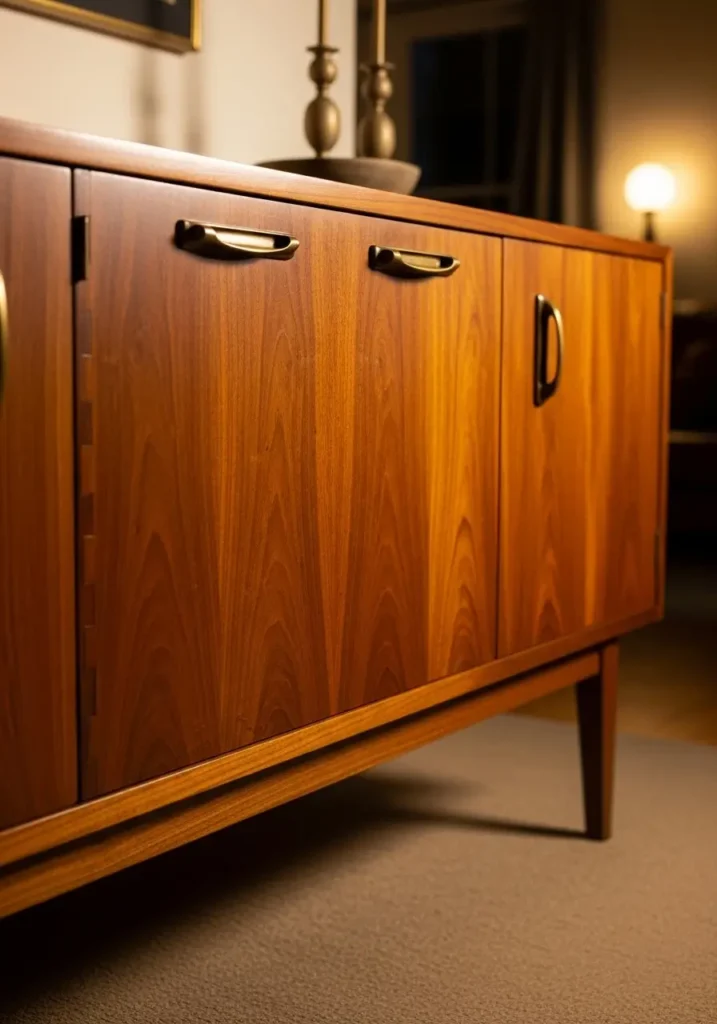
Integrating Mid-Century Modern into Contemporary Spaces
Successful Style Mixing
The versatility of mid-century modern pieces allows for successful integration with various design styles. The key lies in respecting the clean lines and proportions while allowing other elements to complement rather than compete with these iconic forms.
In contemporary settings, mid-century pieces often serve as statement elements that ground more experimental or trend-driven accessories. A classic Eames lounge chair can anchor a room filled with contemporary art and modern textiles, providing stability and sophistication to the overall composition.
Color Coordination
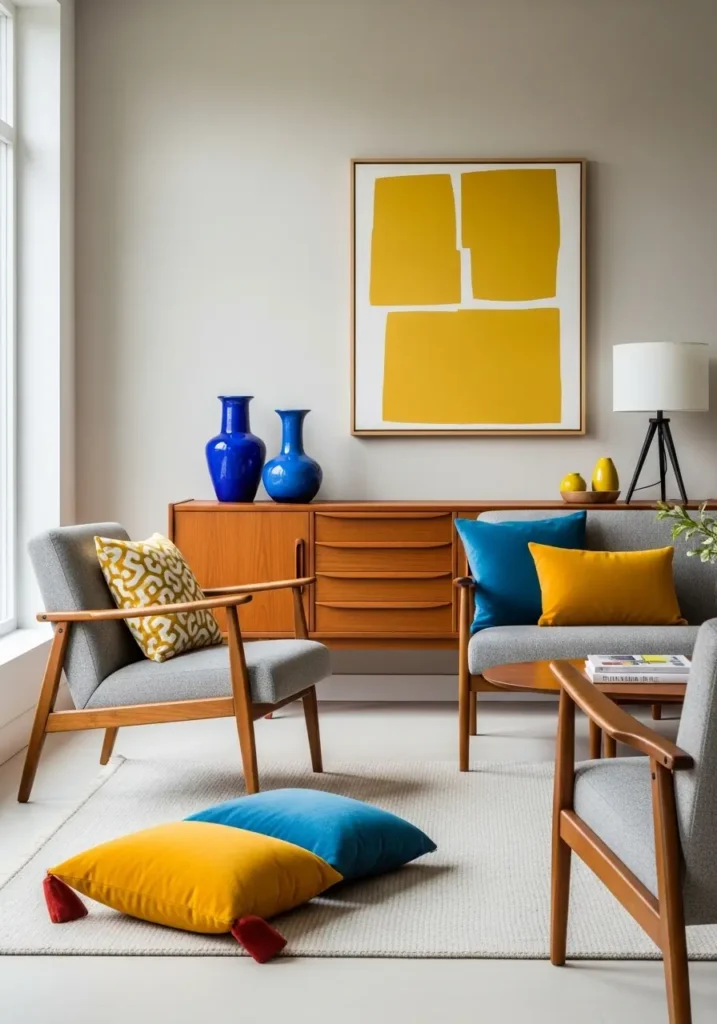
Neutral palettes allow mid-century pieces to shine while bold accent colors can highlight specific design elements. The warm woods typical of the era pair beautifully with both cool and warm contemporary color schemes.
Scale and Proportion
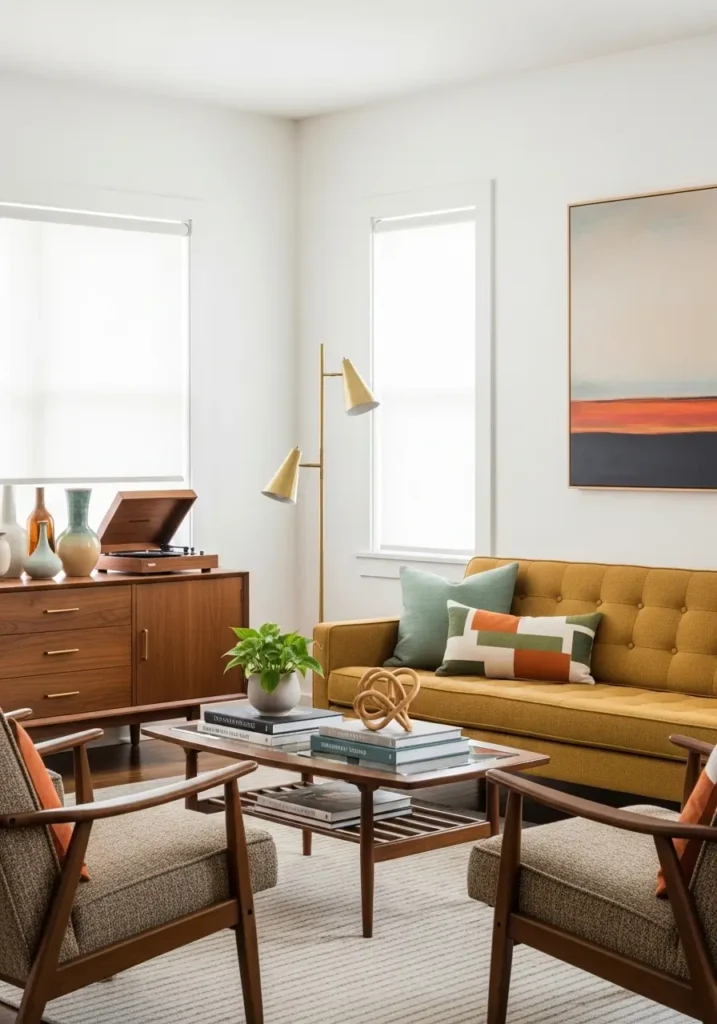
Mid-century furniture often features lower profiles than contemporary pieces. Maintain visual balance by considering sight lines and ensuring that newer additions respect the horizontal emphasis of mid-century design.
Mid-Century Modern Trends
Current trends show mid-century modern evolving while maintaining its core principles. Soft curves and plush textures like bouclé and velvet bring warmth to the traditionally lean aesthetic. Tapered legs remain popular, but contemporary interpretations explore varied materials and finishes.
Sustainability considerations influence modern mid-century production. Manufacturers increasingly use reclaimed woods, low-impact finishes, and recyclable materials. This evolution aligns with the movement’s original emphasis on honest materials and thoughtful design.
The integration of smart home technology represents another contemporary development. Designers create pieces that accommodate modern connectivity needs while preserving the clean aesthetic that defines the style.
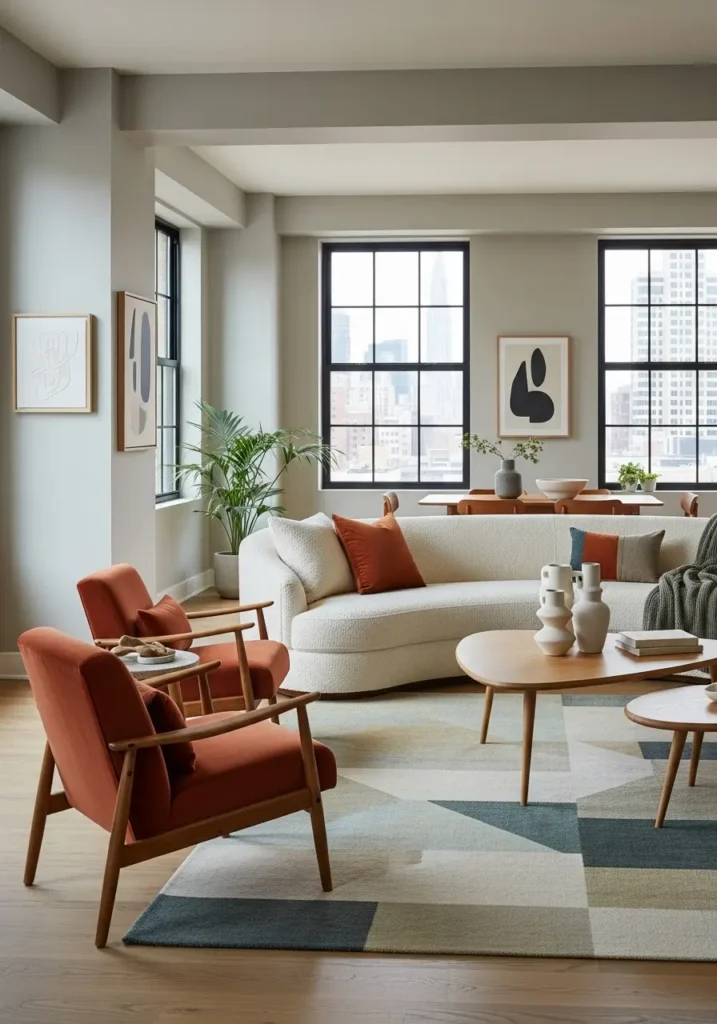
Why Mid-Century Modern Transcends Trends
The enduring appeal of mid-century modern furniture stems from its foundation in universal design principles rather than decorative trends. The movement addressed fundamental questions about how people live, work, and interact with their environments. These concerns remain relevant regardless of changing fashion preferences.
Modern life continues to demand the solutions that mid-century designers pioneered: efficient use of space, integration of indoor and outdoor living, emphasis on natural light, and furniture that serves multiple purposes. These practical benefits ensure continued relevance as living spaces become more compact and lifestyles more flexible.
The movement’s celebration of craftsmanship and material quality also resonates with contemporary values. As consumers become more conscious of sustainability and durability, the mid-century emphasis on well-made pieces that last decades becomes increasingly attractive.
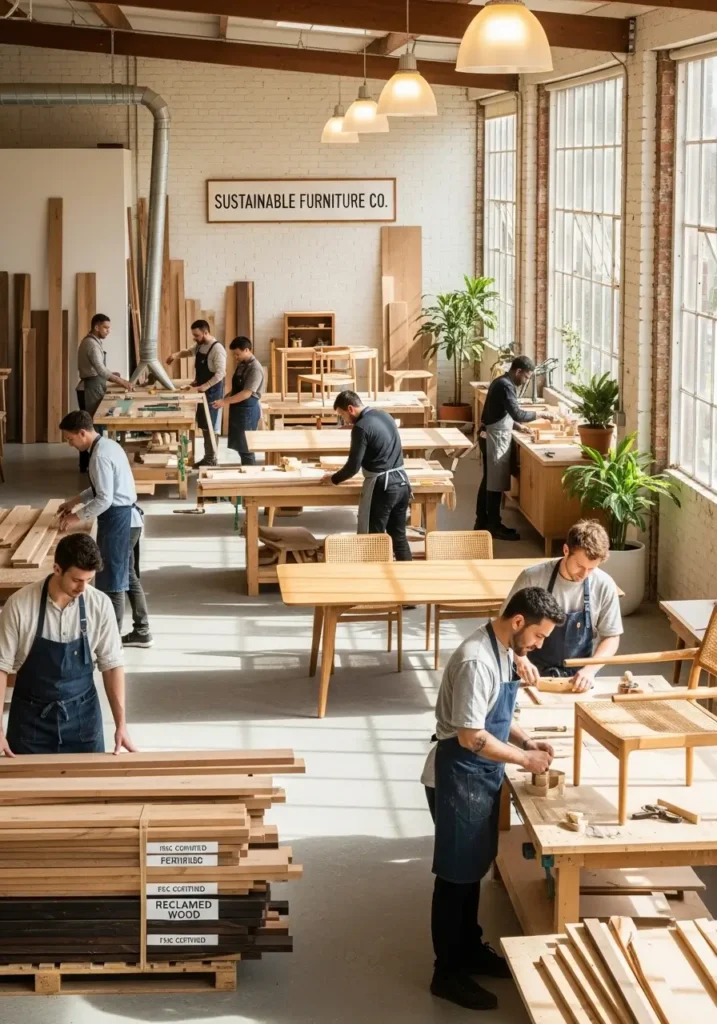
Learn More About Mid-Century Design
For deeper insights into mid-century modern design principles and history, explore these authoritative resources:
Museum of Modern Art – Design Collection
Herman Miller – The Enduring Appeal of Mid-Century Modern
The Timeless Verdict
Mid-century modern furniture has proven its timeless nature through more than seven decades of continued relevance. The movement’s focus on fundamental design principles rather than surface decoration creates pieces that transcend fleeting trends. As we move further into the 21st century, the practical benefits and aesthetic appeal of mid-century design continue to resonate with homeowners, designers, and collectors worldwide.
The investment in quality mid-century pieces, whether vintage originals or contemporary interpretations, represents both aesthetic enhancement and practical value. These designs will likely continue influencing furniture creation for generations to come, cementing their status as truly timeless classics in the design world.
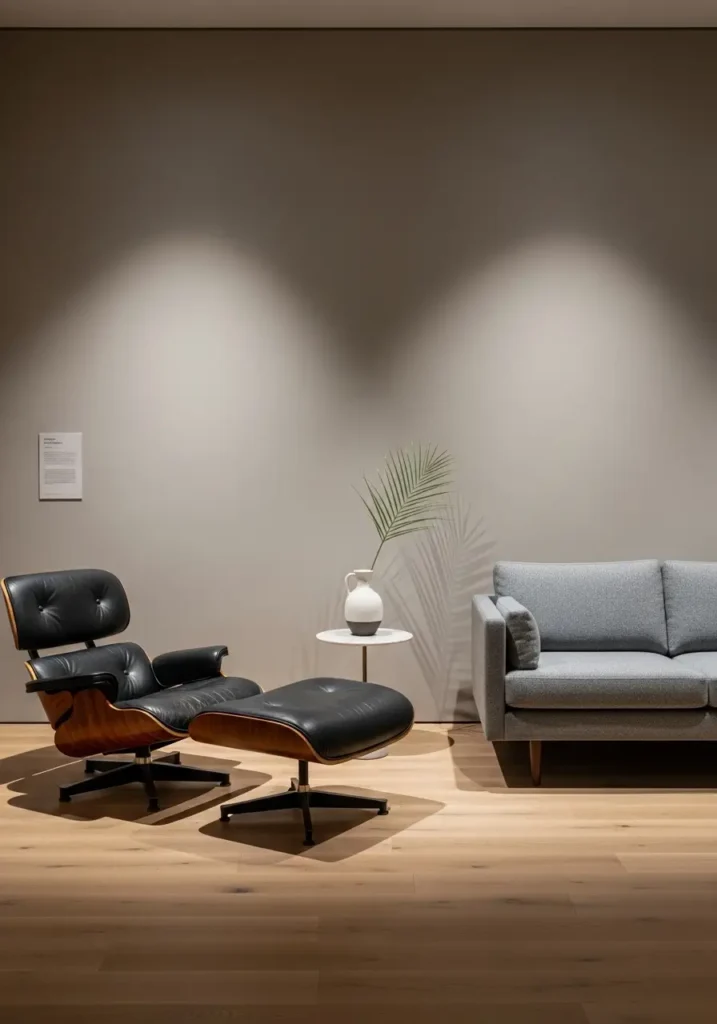
Frequently Asked Questions
What makes mid-century modern furniture different from other styles?
Mid-century modern furniture emphasizes clean lines, functional design, and natural materials. Unlike ornate traditional styles, it eliminates decorative elements in favor of purposeful simplicity. The movement also pioneered the use of new materials like molded plywood and plastic, creating innovative forms that were both beautiful and practical.
Are authentic mid-century modern pieces worth the investment?
Authentic pieces from renowned designers like Eames, Noguchi, and Saarinen consistently appreciate in value due to their limited production, increasing demand, and historical significance. However, high-quality reproductions can provide similar aesthetic benefits at more accessible price points while still offering durability and style.
How can I incorporate mid-century modern pieces into a contemporary home?
Start with one statement piece like an iconic chair or table, then build around it with complementary elements. Mid-century pieces work well with neutral color palettes and natural textures. Maintain the clean lines and open feeling by avoiding clutter and choosing accessories that complement rather than compete with the furniture.
What are the current trends in mid-century modern furniture for 2025?
Current trends include soft curves combined with traditional tapered legs, plush textures like bouclé and velvet upholstery, sustainable materials, and integrated technology solutions. Colors are evolving beyond the traditional palette to include bolder accent colors while maintaining the warm wood foundations of the original movement.
Will mid-century modern furniture remain popular in the future?
The enduring popularity of mid-century modern furniture stems from its foundation in universal design principles rather than decorative trends. Its emphasis on functionality, quality materials, and timeless proportions addresses fundamental human needs that remain constant across generations. These characteristics suggest the style will continue to influence design for decades to come.
